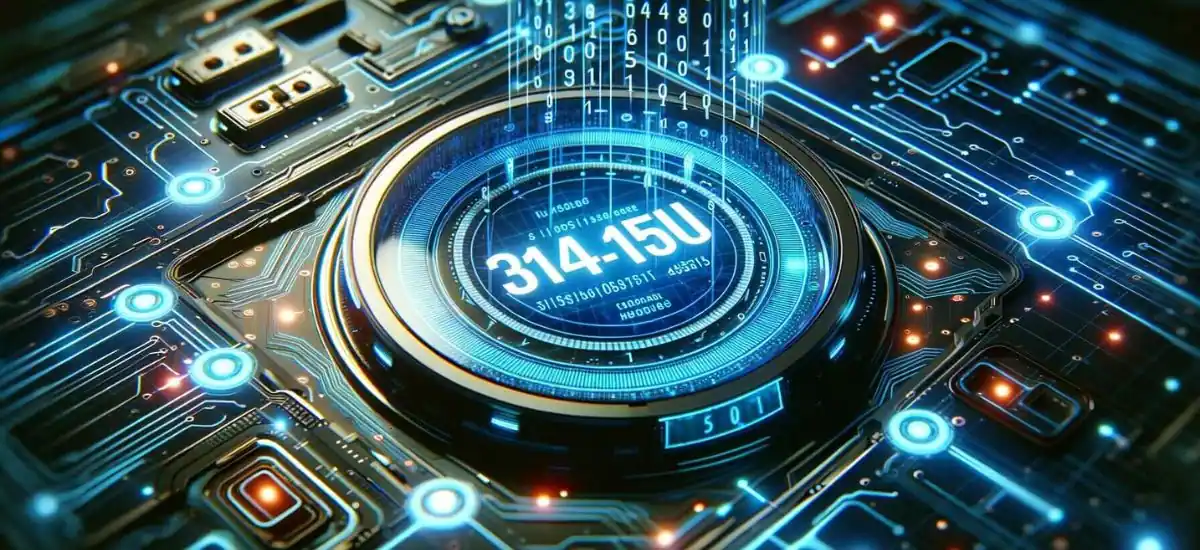Pi (π) is a mathematical constant representing the ratio of a circle’s circumference to its diameter. It’s approximately equal to 3.14159 and is an irrational number, meaning it has an infinite number of non-repeating decimals.
Pi is crucial in various mathematical formulas, particularly in geometry, trigonometry, and calculus. It’s used to calculate areas and volumes of circular and spherical shapes, making it a fundamental constant in both mathematics and science.
This article delves into the fascinating aspects of Pi, exploring its history, calculation methods, and wide-ranging applications. “Pi Perspective 314159u” aims to provide a comprehensive understanding of Pi’s role in our world.
Beyond mathematics, Pi appears in various real-world scenarios, such as engineering, physics, and even art. Understanding Pi helps us grasp the intricacies of the natural and technological world around us.
History of Pi
- Origins of Pi:
- The concept of Pi dates back to ancient civilizations, including the Egyptians and Babylonians, who used rough approximations in their architectural and astronomical calculations.
- Key Historical Figures:
- Archimedes: One of the first mathematicians to accurately estimate Pi’s value using a method involving polygons.
- Liu Hui: A Chinese mathematician who refined the approximation of Pi using inscribed and circumscribed polygons.
- Other Notable Contributors: Contributions from mathematicians across different cultures have led to the modern understanding of Pi.
- Evolution of Pi’s Calculation Methods:
- Ancient Approximations: Early estimates of Pi were around 3.16.
- Medieval Advances: Mathematicians in the Islamic Golden Age developed more accurate methods, bringing the value closer to 3.1416.
- Modern Era: The advent of calculus and computers has allowed the calculation of Pi to millions of digits, pushing the boundaries of mathematical precision.
- Interesting Historical Anecdotes:
- Stories like the “Indiana Pi Bill” attempt to legislate a different value for Pi, highlighting Pi’s cultural impact and the public’s fascination with this number.
Understanding Pi: The Basics
- Definition of Pi (π) and Its Mathematical Representation:
- Pi (π) is the ratio of a circle’s circumference to its diameter, a constant value that applies to all circles regardless of size. Mathematically, it is represented as π = C/d, where C is the circumference and d is the diameter.
- Explanation of Irrational and Transcendental Numbers:
- Pi is an irrational number, meaning it cannot be expressed as a simple fraction and has an infinite, non-repeating decimal expansion. Additionally, Pi is transcendental, meaning it is not the root of any non-zero polynomial equation with rational coefficients.
- Why Pi is Approximately Equal to 3.14159:
- This approximation is derived from using polygons to estimate the circumference of a circle. The more sides the polygon has, the closer the approximation gets to the true value of Pi.
- The Significance of Pi in Geometry, Particularly in Circles:
- Pi is essential in formulas involving circles, such as calculating the area (A = πr²) and the circumference (C = 2πr). Its role extends to spherical volumes and surface areas, making it indispensable in both theoretical and applied mathematics.
The Calculation and Approximation of Pi

- Historical Methods: Ancient approximations using polygons, like those by Archimedes, set early estimates of Pi.
- Infinite Series & Algorithms: Techniques like the Gregory-Leibniz series and modern algorithms like Gauss-Legendre provide greater accuracy.
- Computational Advances: The use of supercomputers has enabled calculations of Pi to over 31 trillion digits.
Applications of Pi in Various Fields
- Mathematics: Crucial for calculating areas and volumes of circles and spheres, and in trigonometry.
- Physics: Key in waveforms, quantum mechanics, and cosmology.
- Engineering: Used in architecture, mechanical design, and electrical circuits.
- Everyday Life: Appears in technology and natural patterns.
The Cultural Impact of Pi
- Popular Culture: Featured in films, books, and music, symbolizing mystery and beauty.
- Pi Day: Celebrated on March 14th with events like pie-eating contests and educational activities.
- Philosophical Significance: Represents infinity and the complexities of the universe.
The Infinite Mystery of Pi
- Endless, Non-Repeating Decimal: Pi is an irrational number, meaning its decimal representation never ends or repeats. This infinite nature adds to its allure and mystery.
- Philosophical Implications: Pi’s infinite and non-repeating sequence challenges our understanding of mathematics and reality, raising questions about the nature of numbers and the universe.
- Challenges in Understanding Pi: Despite knowing millions of digits, the exact nature of Pi remains elusive, symbolizing the limits of human knowledge.
Current Research and Developments in Pi
- Ongoing Studies: Researchers continue to explore Pi’s properties, including finding new ways to calculate its digits more efficiently.
- Artificial Intelligence and Algorithms: AI and advanced algorithms are being used to push the boundaries of Pi’s calculation, potentially discovering new mathematical properties.
- Future Applications: Pi’s applications are expanding, with potential uses in cryptography, computing, and even quantum physics.
Frequently Asked Questions
- How is Pi used in modern technology?
- Pi is crucial in digital imaging, GPS systems, and simulations in computer graphics.
- Why is Pi represented by the symbol π?
- The symbol π was popularized by mathematician William Jones in the 18th century, derived from the Greek word “periphery.”
- What is the record for the most digits of Pi memorized?
- The record is over 70,000 digits, memorized by Suresh Kumar Sharma in 2015.
- Is Pi the only irrational number related to circles?
- No, other irrational numbers like Tau (τ) also relate to circles, representing the ratio of the circumference to the radius.
Read More:

